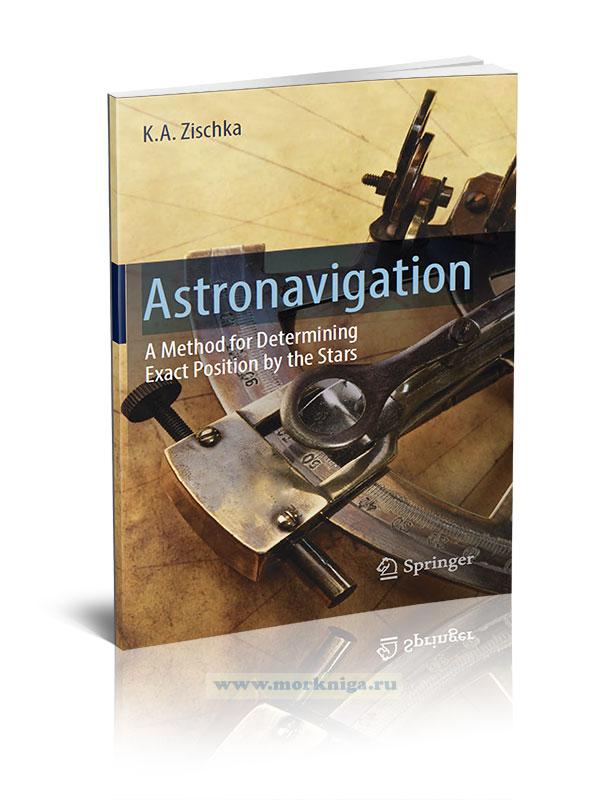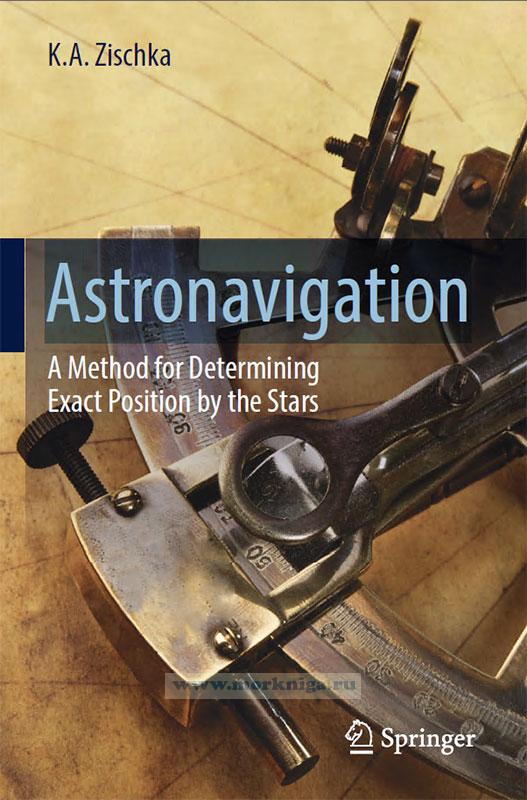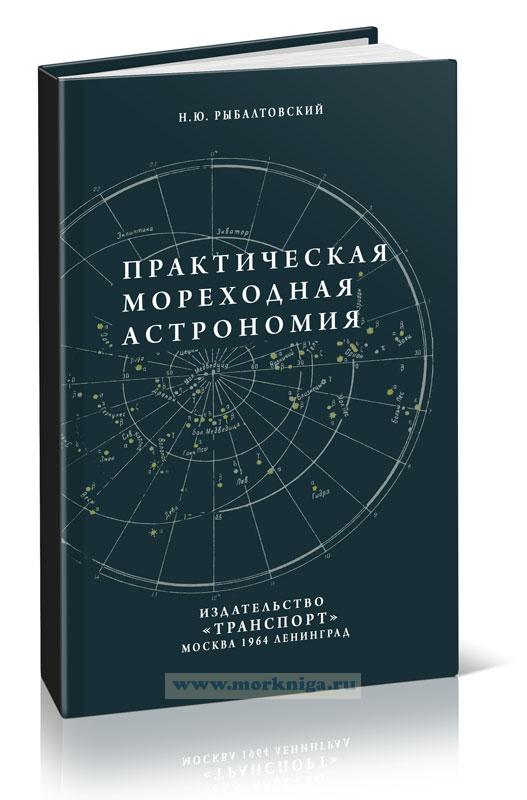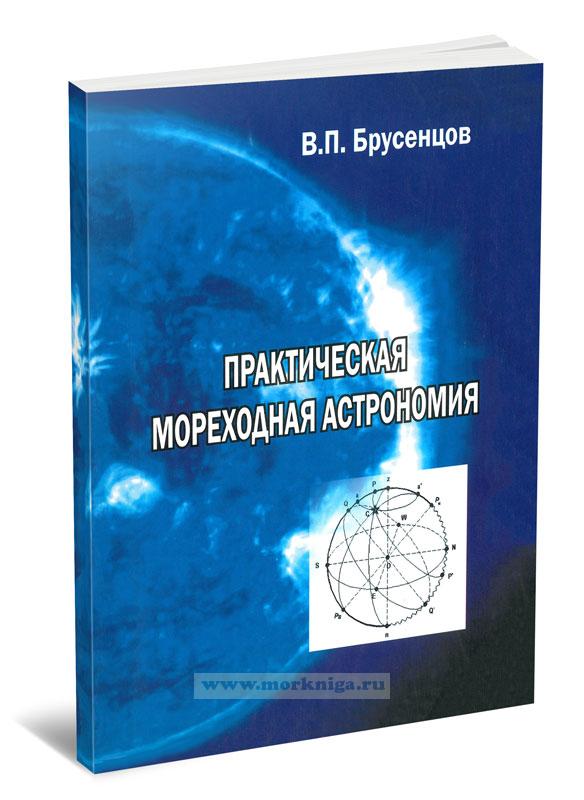Astronavigation: A Method for Determining Exact Position by the Stars
This book acts as a manual for the ancient methods of navigating by the stars, which continue to provide the sailor or pilot with a timeless means of determining location. Despite the prevalence of GPS, a comprehensive set of formulae that can be evaluated on any inexpensive scientific calculator in the event of a catastrophic software or systems failure is a vital failsafe. It also serves as a living link to centuries of explorers from centuries past. Beginning with the basics of positional astronomy, this guide moves on to the more complex math necessary to understand the ephemerides, tables showing the future positions of the stars and planets. These astronomical almanacs were the satellite navigation of their day. The objective of this book is twofold: to provide the reader with a concise, comprehensible manual on positional astronomy as it applies to astronavigation and to furnish the concise algorithms for finding the position of the Sun and various navigational stars at any given instant. In a world where too many mariners and aeronauts rely solely on technology and are vulnerable to solar flares, electrical issues, and the like, this knowledge can be a life-saving backup, not to mention a fascinating study in its own rights. Included is an exact mathematical way to determine your position in the air or on the sea far more quickly and accurately than by using the old celestial navigational method, without even needing to know or understand the underlying mathematics. There is even a section that teaches how to measure the azimuth of a star using an analog wrist watch so if a sextant gets damaged, locating position is still possible. This book offers mathematicians and adventurers a way to determine position when the skies go dark. The U.S. Navy has recently realized that their electronic navigation systems are vulnerable to cyber attack, and as a result has instructed the Naval Academy to begin teaching celestial navigation again.
About the Author. Kurt Anton Zischka received a Dr. of Science Degree at the Technische Hochschule in Darmstad.
He went on to teach at the University of Saskatchewan and at the University of Windsor, Ontario, in the subject of Applied Mathematics and Mathematical Physics. He held a Visiting Appointment as a Professor at the University in Karlsruhe, Germany, and also had an appointment at the D.I. of F.R. in Bombay (Mumbai), India. Later, he worked for two years at a University in West Africa. He is also an avid sailor.
Contents
Part I Analytical Approach to Navigation
1 Terrestrial Navigation
1.1 On the Design of Conformal-Mercator and Non-conformal Charts and Plotting Sheets
1.2 Rhumb-Line or Loxodrome Navigation
1.3 Approximations of Loxodromes by Straight Lines on the Plotting Sheet
1.4 Applications and Numerical Examples
1.5 Gnomonic or Great-Circle Navigation
1.6 Numerical Examples and More Chart Projections
2 Astronavigation
2.1 Lines of Position, Position Fix, Navigational Triangle and Fix by Computation
2.2 Celestial Sphere, Equatorial and Horizon System of Coordinates, Navigational Triangle and the Ecliptic Coordinate System
2.3 Conclusions and Numerical Examples
2.4 The Use of the Exact Equations for Finding the Position at Sea or Air by Employing Two or More Altitude Measurements Together with the Corresponding Measurements of Time
2.5 Conclusions and Numerical Examples
2.6 An Exact Method Based on Cartesian Coordinates and Vector Representations
2.7 Numerical Examples and Conclusions
2.8 On Approximate Solutions for Finding the Position at Sea or Air by Employing Two or More Altitude Observations
2.9 An Approximate Method Based on Matrices and the Least Square Approximation
2.10 Sumner’s Line of Assumed Position Method as Scientific Method
2.11 Numerical Example and Logarithmic Algorithm
2.12 How an Approximate Position at Sea or Air Can Be Found if an Approximate Value for the Azimuth or the Parallactic Angle Is Known in Addition to One Altitude
2.13 On the Effect of a Change in Time on the Altitude and Azimuth
2.14 How to Determine Latitude at Sea or Air Without the Use of a Clock
2.15 On Calculating the Interval Between Meridian Passage and Maximum Altitude and Finding Approximate Longitude and Latitude of a Moving Vessel, and Longitude by Equal Altitudes
2.16 To Find Latitude by Observing Polaris When Exact UTC and Longitude or an Approximation Is Available
2.17 The Most Probable Position When Only One LOP and DRP Are Known
2.18 How to Calculate the Time of Rising and Setting of Celestial Objects and How to Use the Measured Time of These Phenomena to Find Longitude
2.19 On the Identification of Stars and Planets
2.20 How to Navigate Without a Sextant
2.21 On Finding Time and Longitude at Sea, the Equation of Computed Time (ECT), and Being Completely Lost
3 Methods for Reducing Measured Altitude to Apparent Altitude
3.1 Navigational Refraction that Includes Astronomical Refraction for Low Altitude Observations
3.2 The Dip of the Horizon as a Function of Temperature and Pressure
3.3 Planetary Parallax and Semi-diameter of the Sun and Moon
3.4 Time and Timekeeping
3.5 On the Minimization Procedure for the Random Errors in Determining Altitude and Time
4 Some of the Instruments and Mathematics Used by the Navigator
4.1 Some of the Formulae and Mathematics Used by the Navigator
4.2 Some of the Instruments Used by the Navigator
Part II Formulae and Algorithms of Positional Astronomy
5 Elements of Astronomy as Used in Navigation
5.1 Some Basic Concepts Describing the Motion of the Earth Around the Sun
5.2 An Approximation to the Time of Transit of Aries at Greenwich and the Greenwich Hour Angle GHA of ?
5.3 The Right Ascension of RA of the Mean Sun, Mean Longitude, Mean Anomaly, Longitude of Perigee, Longitude of Epoch and Kepler’s Equation
5.4 The Equation of the Center, Equation of Time and True Longitude of the Sun
5.5 Numerical Examples and Other Concepts of Time
5.6 An Approximate Method for Finding the Eccentricity, the Longitude of the Perigee and the Epoch
5.7 Some Improved Formulae for the Equation of Time and Center
6 Qualitative Description: The Relevant Astronomical Phenomena
6.1 On the Change of the Elements of the Orbit with Time
6.2 The Concept of the Julian Date (JD) and Time Expressed by Julian Centuries (T)
6.3 The Elements of Our Orbit as a Function of the Time T Expressed by Polynomials
6.4 Qualitative Aspects of Precession and Nutation
6.5 The Concept of Proper Motion for Stars
6.6 Aberration
6.7 Annual Stellar Parallax, Definitions of Mean, True and Apparent Place of a Celestial Object
7 Quantitative Treatise of Those Phenomena
7.1 Effects of Precession on the RA and the Approximate Method of Declination
7.2 Rotational Transformations and Rigorous Formulae for Precession
7.3 Approximate Formulae for the RA ? and Declination d as the Result of Two Rotations Only
7.4 Effects of Nutation on the RA and Declination
7.5 Effects of Proper Motion on the RA and Declination d
7.6 Effects of Aberration on the RA and Declination d
7.7 Effects of Annual Parallax on the RA and Declination d
7.8 Calculating the Apparent RA and Declination d, and the Equation of the Equinox
8 Ephemerides
8.1 Low Accuracy Ephemeris for the Sun, a Numerical Example
8.2 Intermediate Accuracy Ephemeris for the Sun
8.3 Low Accuracy Ephemeris for the Stars
8.4 Intermediate Accuracy Ephemeris for the Stars
8.5 Compressed Low Accuracy Ephemeris for the Sun and Stars for the Years 2014±
8.6 The Earth Viewed as a Gyro
Appendix A: Condensed Catalogue for the 57 Navigational Stars and Polaris
Appendix B: Greek Alphabet
Appendix C: Star Charts
References
Index


 Практическая мореходная астрономия
Практическая мореходная астрономия  Практическая мореходная астрономия
Практическая мореходная астрономия  Мореходная астрономия
Мореходная астрономия